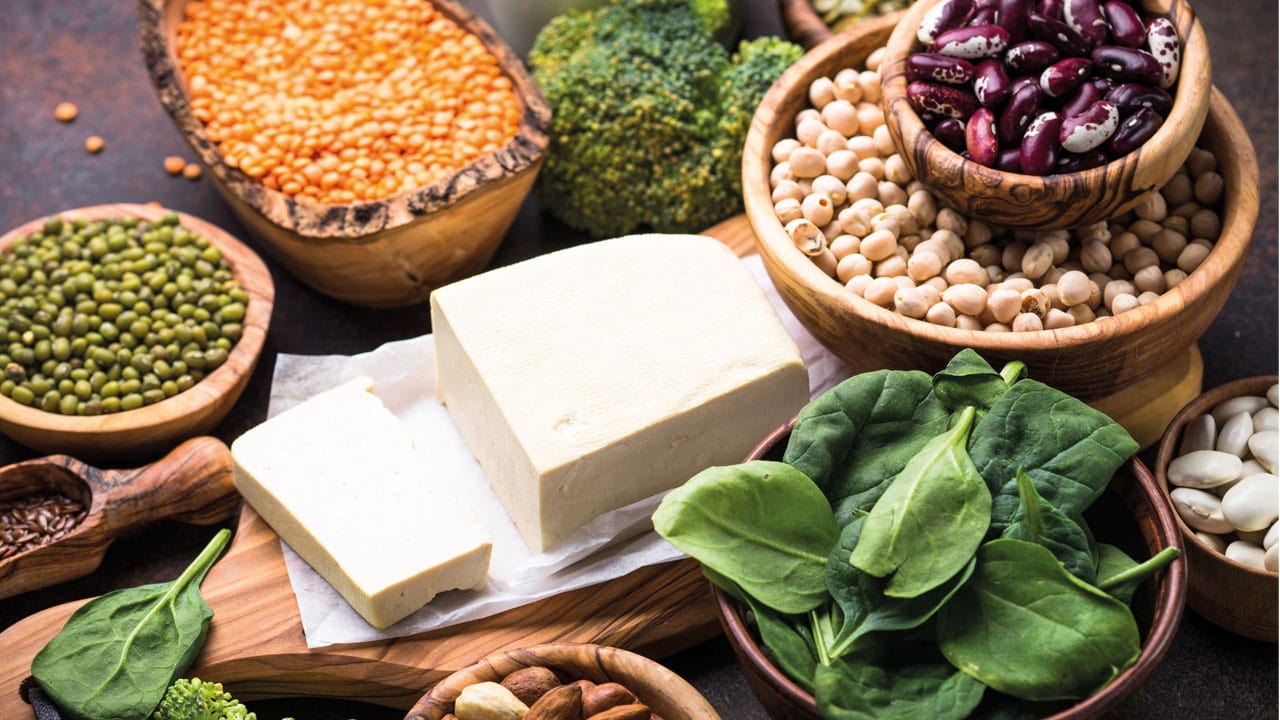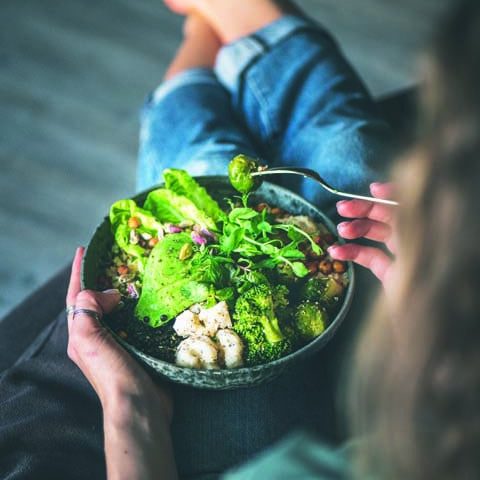
Vegans & Protein: 5 myths busted
The truth about vegan protein sources. Louise Palmer-Masterton, founder, Stem & Glory, busts some popular myths
I am sure you’ve heard the joke: Q: How do you know if someone is vegan? A: They tell you! Nothing seems to trigger people more one way or the other than being in the presence of a vegan! It gives rise to a whole load of immediate remarks, ranging from the perennial question, ‘Where do you get your protein from?’ to comments about what will happen to all the animals if we stop eating them. What will happen to all the animals can wait for another time, but for now, here are the top five vegan protein myths — busted!
1. We do not need to eat animal products to get protein
Almost every food source contains an element of protein, including all vegetables. Peas, kale, broccoli, mushrooms and asparagus are particularly good protein sources as, of course, are beans, lentils, nuts and seeds. Your average pork chop contains approximately 20g of protein. This is exactly the same amount of protein as half a cup of tofu, or 1 cup of cooked beans. Add your tofu or beans to vegetables, a sprinkling of seeds or nuts and you’ll be up to more than 30g — over half your recommended daily amount (RDA). In fact, it is actually easy for vegans to eat more than their RDA of protein without even trying. In the course of trying to ‘get enough protein’ many vegans are actually getting more than they need.
2. We do not need to get our full spectrum amino acids from one food source
All proteins, animal or plant, are made up from amino acids. When you eat protein, your digestive system breaks it down into amino acids, which are then absorbed into the bloodstream. The acids then build the proteins that make up your muscles, organs and tissues. Not all aminos are ‘essential’ but there are nine aminos that the body cannot manufacture which are essential and have to be consumed for optimum health. Animal-based proteins contain all nine essential amino acids, which makes them ‘complete’ proteins, but it is not actually necessary to eat one food that contains everything. Combining plant foods results in complete protein and gives exactly the same result nutritionally. You don’t even need to eat your full spectrum of amino acids at the same meal. The liver can store essential amino acids, so as long as you eat a varied, plant-based diet that regularly includes all the aminos, you’ll be getting everything you need. Some plant sources are actually already complete proteins — soy, quinoa, buckwheat, chia, hemp and amaranth — but rather than focus on just those, it is far better to simply eat a combination of vegetables and plant proteins.
3. Vegans do get enough protein
It is recommended that we consume 0.8 grams of protein for every kilogram that we weigh. That would give an average person 60 grams per day. Eating two meals as outlined in point one will give ample protein. Eating more than this doesn’t actually have any health advantage, and can actually be detrimental to health and wellbeing. Too much protein, especially meat-based protein, gives an increased risk of a wide range of conditions, from mild ones such as bad breath, digestive problems and dehydration to increased risk of more serious diseases. Eating too much protein is a factor in weight gain since surplus turns to fat. Protein deficiency is rarely seen in affluent populations, and generally only seen in populations where all food is scarce. Simply put, where food is abundant, all people, regardless of their dietary choices, will be getting more than enough protein, and all the aminos they need.
4. You can bring up a child on a vegan diet
The world is actually full of healthy vegan children, we just don’t hear about them. All we hear is one extreme horror story of one Australian family depriving their baby by feeding them only vegan food. Turns out that they are depriving their child of food, period, and of course that will lead to ill health. There is no link between veganism and malnutrition among children of any age, as long as attention is paid to balanced nutrition.
The first thing you need to do if you are considering raising vegan children is educate yourself, and if you don’t already love to cook, it is time to get cooking. And it’s time to fall in love with lentils, beans, nuts, seeds and a wild array of vegetables. You need to become an expert in plant-based nutrition and understand what constitutes a balanced diet. With children, as well as balanced protein and healthy fats, you will need to pay particular attention to vitamin D, vitamin B12, calcium, zinc and iron. It’s worth noting by the way that 100g of wholemeal bread contains 13g of protein, which is more than in 100g of egg. Here are some kidfriendly high protein food combining snack ideas:
- Wholemeal toast and peanut butter
- Beans on wholemeal toast
- Pitta bread and hummus
5. Vegan food doesn’t have to be expensive
A vegan wholefood diet is way cheaper than either an animal protein diet or a vegan processed protein diet. The key word though is ‘wholefood’. There has been an explosion of plant protein products in the supermarkets, but almost all are highly processed, packed in plastic and quite expensive compared to their similar animal products. Whilst I do think vegan junk and plant-based meat and cheese do play a role in converting people to veganism, if you want to save money, stop buying it! British grown lentils and peas (yellow or Carlin peas not garden peas) grow well in the UK and cost around £4 a kilo. They are extremely versatile and nutritious and yellow peas in particular come as whole peas, split peas and pea flour and can be used in so many different ways from falafels to ‘meat’ balls, daal, and pancakes. One cup of dried lentils or peas costs less than £1 and will feed 4 people. Buy these and your veggies from a local small store or farm shop and you will save further, not only money, but also packaging.
I am a firm believer that the best diet you can eat is a wholefood one — fresh, natural and unprocessed plant-based foods. If you like tofu and tempeh then great, if not, then beans and lentils are even better. If you don’t like either then you’ll still get enough protein from vegetables, grains, nuts and seeds.
Moving to wholefoods from animal and processed products requires us to slow down. It’s convenience that drives processed and packaged foods, and in such a time-pressed society, it’s easy to default to unhealthy grab and go. Building some time into your schedule for making your own lunch and cooking from scratch does require a change in your schedule, but it really doesn’t need to be onerous. Take small steps, one at a time. And when it comes to being fully vegan? Never give up trying to give up!
And next time someone asks you where you get your protein from, you can now tell them with some authority!
Louise Palmer-Masterton is the founder of Stem & Glory plant-based restaurants (stemandglory.uk)



